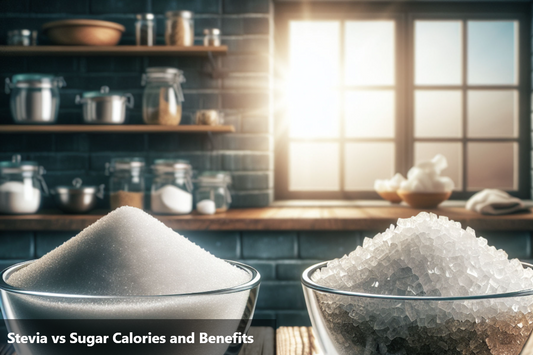For those managing type 2 diabetes, food choices directly affect blood sugar control and health. Rice, a common grain, can significantly impact blood glucose levels. Understanding rice's role in a diabetes meal plan is essential.
As a high carbohydrate food, rice can cause spikes and crashes in blood sugar when eaten in large quantities. The starch converts into blood glucose, making portion control and preparation methods important.Not all rice is equal. Whole grain brown rice and wild rice have more fiber, slowing digestion. White rice is processed, higher glycemic, and rapidly spikes blood sugar.
People with diabetes can incorporate moderate amounts of rice combined with fiber, protein or fat to blunt blood sugar impacts. Mindfulness of carb-heavy foods promotes steady glucose levels. Navigating rice’s effects empowers healthier meal planning. Let’s explore the relationship between nutrition and diabetes, aiming to grasp food choices that positively influence wellbeing. Informed decisions drive better blood sugar control.
Understanding the Glycemic Index
Glycemic Index (GI) Overview: The GI categorizes foods based on their effect on blood glucose levels post-consumption. Low GI foods (GI 55 or less) cause a gradual rise in blood sugar. High GI foods (GI 70 or more) lead to a rapid spike in blood sugar levels.
Impact of Rice on Blood Sugar:
Brown Rice: Contains the bran and germ intact, resulting in a lower GI compared to white rice.
White Rice: Highly processed, which removes the bran and germ, leading to a higher GI.
Basmati Rice: Known for its long-grain and unique composition, it offers a moderate impact on blood glucose levels.Importance for Type 2 Diabetes Management: Understanding the GI helps in making informed dietary choices to manage blood sugar levels effectively. Choosing lower GI rice varieties, such as brown rice or basmati rice, can contribute to better blood sugar control. Combining rice with fiber-rich foods, proteins, and healthy fats further moderates its glycemic impact.
Best Rice Options for Type 2 Diabetes
When it comes to selecting rice for a type 2 diabetes-friendly diet, not all grains are created equal. Let's delve into some of the best options that not only satisfy our taste buds but also contribute positively to managing blood sugar levels.
First on the list is basmati rice. Known for its distinct aroma and long grains, basmati rice boasts a lower glycemic index compared to its shorter-grain counterparts. This means it has a gentler impact on blood glucose levels, making it a favorable choice for individuals with type 2 diabetes.
Next up, we have black rice, often hailed as a nutritional powerhouse. Rich in antioxidants and fiber, black rice offers a slower release of sugar into the bloodstream, aiding in better blood sugar control. Its unique nutritional profile sets it apart as a beneficial option for those mindful of their diabetes management.
Brown rice, with its bran and germ intact, is another standout choice. Packed with fiber and essential nutrients, brown rice provides a more sustained release of energy, avoiding sudden spikes in blood sugar. Making this switch from white to brown rice can be a simple yet impactful step toward a more diabetes-conscious diet.
For those who would want to have a rice variety that guarantees zero sugar spikes, then Diabesmart’s Low GI rice is worth checking. This rice is clinically proven to have Low Glycemic Index and it tastes exactly like white rice.
In our journey to identify the best rice options for type 2 diabetes, it's essential to consider not only the taste but also the nutritional benefits. These alternatives – basmati, black, and brown rice – offer a diverse range of flavors and textures while contributing to a more stable blood sugar environment. Making informed choices about the grains we consume can be a small yet impactful step toward better diabetes management.
Proper Cooking Methods for Diabetes-Friendly Rice
Now that we've identified the best rice options, let's shift our focus to the kitchen and explore the cooking methods that align with diabetes-friendly practices. How we prepare our rice can significantly impact its glycemic index and, consequently, our blood sugar levels.
Boiling rice emerges as a top contender in the realm of diabetes-conscious cooking methods. The process of boiling allows the rice to retain more of its nutrients, and it results in a lower glycemic index compared to methods like frying or even steaming. Boiled rice, whether it's basmati, black, or brown, can be a more favorable choice for those aiming to manage their blood sugar effectively.
Simultaneously, incorporating techniques like soaking rice before cooking can further enhance its nutritional profile. Soaking helps break down some of the starches, potentially reducing the overall glycemic impact. This simple step can be particularly beneficial for individuals looking to make incremental changes in their diet for better diabetes management.
Opting for smaller portions and avoiding overcooking are additional considerations. These practices not only contribute to better blood sugar control but also ensure the retention of essential nutrients in the rice.
As we navigate the kitchen in pursuit of diabetes-friendly rice, it becomes clear that our cooking methods play a pivotal role in shaping the health impact of this dietary staple. Embracing techniques like boiling and soaking can transform the way we approach rice preparation, offering a practical and effective avenue for individuals with type 2 diabetes to optimize their dietary choices.
Important points
To recap, we explored how rice consumption affects blood sugar control in type 2 diabetes. Proper dietary choices are critical for diabetes management.
- The glycemic index of rice varieties differs. Basmati, black and brown rice are lower glycemic options more suitable for diabetes diets. They help prevent blood sugar spikes.
- Cooking technique also impacts rice's effects. Boiling better retains nutrients while limiting spike potential. Portion control and soaking rice first also blunt blood sugar effects.
In summary, mindful rice choices enable healthy diabetes diets. Considering rice type and preparation methods allows enjoyable consumption while controlling blood sugar. As we saw, tailored approaches to incorporating rice empower positive impacts on overall wellbeing and diabetes care.
This Blog post is an initiative by DiabeSmart, to provide accurate and Nutritionist / Doctor approved information related to Diabetes. DiabeSmart is India's first Food brand designed specifically for Diabetics, that has been clinically tested on Diabetics and Pre-Diabetics to deliver 55% - 70% lower Sugar spikes. DiabeSmart is part of Lo! Foods - India's leading brand for Everyday Functional Health foods.













